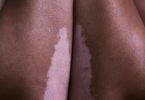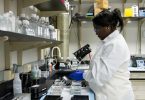In 2019, a household survey of the non-institutionalized civilian population within America, revealed that blood donations in the last 12 months from the Black community were significantly lower. 3.9% of donations from the Black community compared to other races is an indication that there is a lack of diverse blood donations, especially from Black people.
Why diverse blood?
Minorities are not represented well when it comes to calling for blood donations. In this way, many developed countries remain deprived of diverse blood. The concern is that diverse blood has different blood tissue types. Matching the donor’s blood with the receiver is mandatory for healthy blood transfusions without any consequences. This matching is considered before seeking adequate and effective blood supply for rare disorders like sickle cell disease. It is commonly noted that recently African Americans have not supplied the majority of multiple antigen-negative units in the Black community in the US. The demographic findings usually shift the attention to improving individual participation in blood donations. Doing so increases the large pool of new donors and sufficient storage will arise.
The integration of diverse blood boosts health equity for all populations and nations to reduce under-representation while contributing through blood donations. To compensate for the multiple rounds of frequent transfusion, collecting diverse blood is an intervention for mankind. Hence people from different races and countries will provide extended blood for rare blood types and ensure the appropriate supply to get rid of alloimmunization to prevent shortage when needed. As a part of the diversity and inclusion strategy, migrants, transgenders and even all the populations with special clinical needs must be included in the exchange of blood.
Diverse blood is a gift for some diseases
Among Western countries, people with partial ancestry from Africa and America are underrepresented in blood donations. Also, refugees are not considered for donation. The donors with specific blood types are common in total ancestry of a race and the instance of Duffy negative phenotype is absent in the people who are not Black. The people who need frequent donations are at high risk for alloimmunization and it becomes the cause of hemolytic transfusion reactions. One example is sickle cell disease and the people with this disease need to receive red blood cells that produce antibodies. So to attain a well-matched negative antigen blood is mandatory.
To create a gap for this need, language barriers and the unavailability of agencies targeting high-demand groups are some of the factors to take into account to remove the distance between donors and receivers. A lot of insight is needed for the fulfilment of this agreement to save lives. People in the healthcare sector must be part of a team to attempt to make an assembly of potentially diverse donors. They are not only experts but hematologists are also individuals with whom people comply better than community workers. A group of volunteer patients must also be strong representatives to invite people to donate blood whenever the supply is inadequate.
Getting more blood from Black youth
Most of the socio-demographic studies have revealed that blood donors are young males who are students aged between 18-24 years. Youth and active lifestyle including physically active routine are the predictors of healthy blood production. To engage Black people for blood donation opportunities the continued differences among donors should be eliminated. The barriers of discrimination and policies should be addressed with the help of evidence-based data to highlight the enhancement in the diverse donor recruitment for a healthy community.
Facilitators are attaching altruism benefits; focusing on awareness raising and recruitment strategies, health checks and offering incentives. Helping others to save their life and attracting blessings to one’s life through this act of kindness is a determinant to increase blood donations and building motivation. Almost 63-99% of the donors strongly agree that it is the right thing to do. We may connect Africans with this idea because they are less likely to report for blood donations using this purpose. People who donate blood enjoy helping others.
Doing appeals to different ethnic groups also collects diverse blood. People who repeatedly donate blood must be invited with their friends and family to donate and increase the rate of donors. First-time and repeat donors’ numbers are also very low among Black donors so far. Blood drive organizers may also request certain marketing campaigns to ask for blood donations. Institutional involvement for universities and offices must recruit and retain donors because people are motivated and influenced by their peer group.
Likewise, research pointed out that receiving gifts for donating blood is the least favorable but a potential facilitator to motivate people for this cause. Church attendees reported special recognition and rewards lesser than the Black donors. However, it is an option to get more donations from the Black community. Those individuals who repeat donations may not want a gift but a work day off or reinforcement related to their preference. Exploring individual choice may be difficult but possible when targeting an institutional staff or a team (ie, investment office and university). Another easy way is to collect blood for health checks and free results reports. People avoid testing when it is paid and donation for the sake of results without any cost may excite them. Black people appreciate a reward so it is a potential and highly recommended method to complete the requirement of diverse blood for the sake of provision to sickle cell disease and transfusions for blood-related other health conditions. Further research, healthcare and social workers, awareness campaigns and policies to ensure the reach of Black blood donors at equal levels to whites, Asians and Hispanics can be boosted. These solutions are imperative for a sustainable blood supply.
There is a dire need for diverse blood indeed and donations from the Black community must exceed from 15% to 40% every year to beat chronic diseases such as sickle cell. It is important to recruit more Black donors and encourage them to give their contribution to the promotion of healthcare.
For more reading:
—
References:
https://www.hindawi.com/journals/jeph/2019/6810959/








